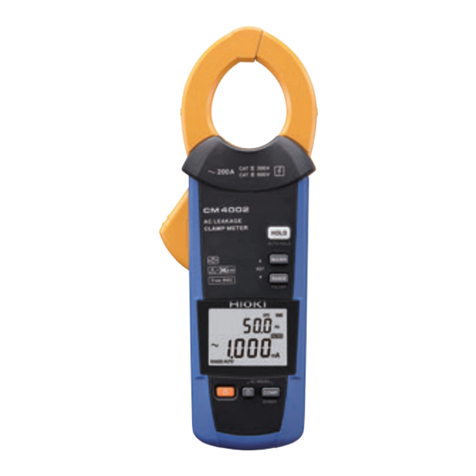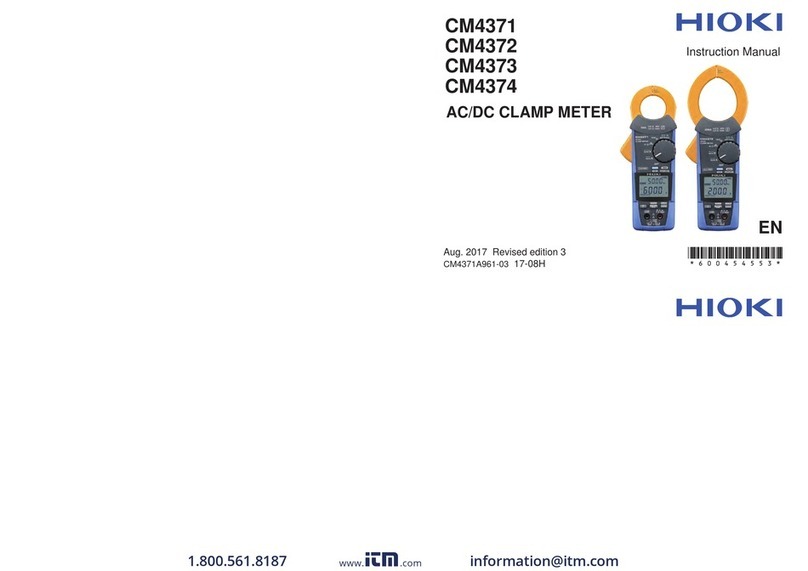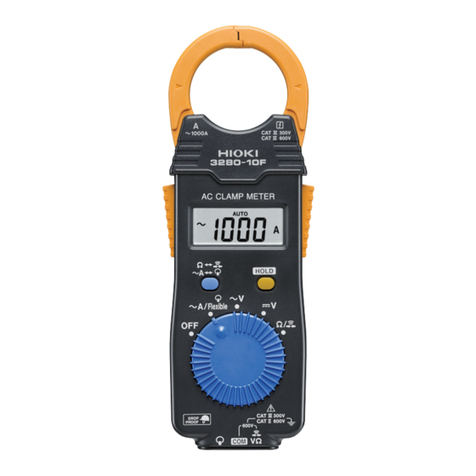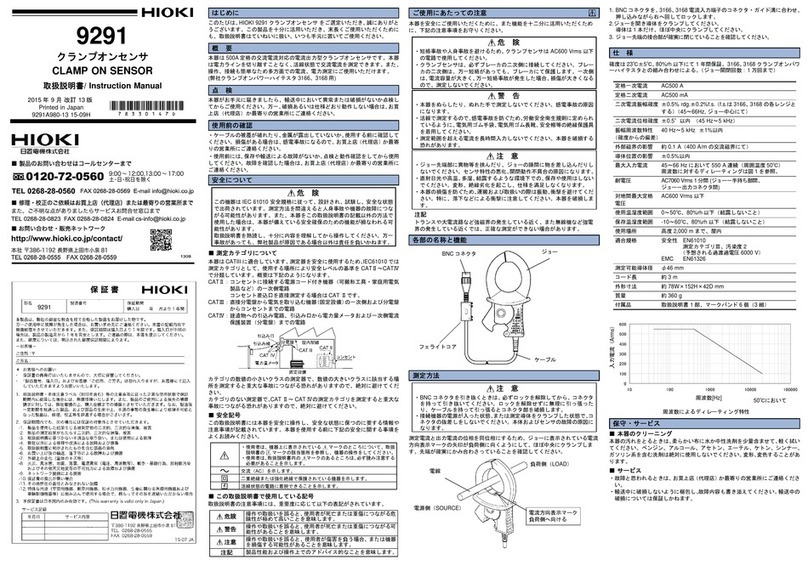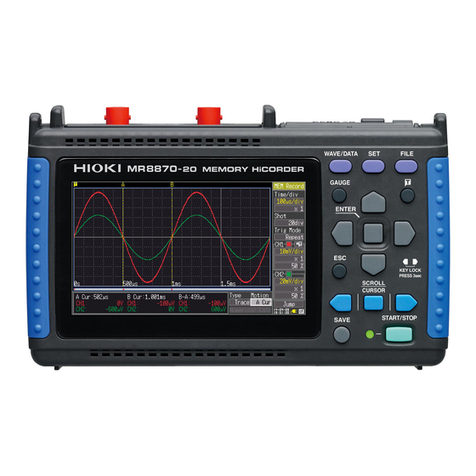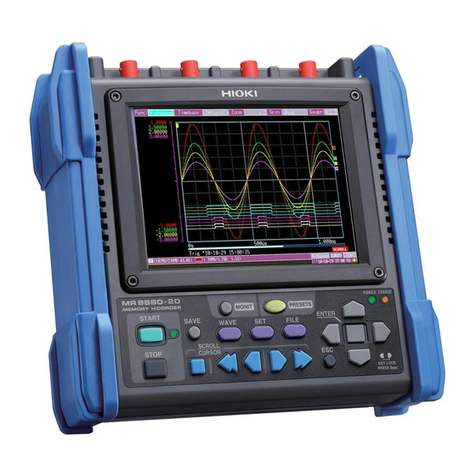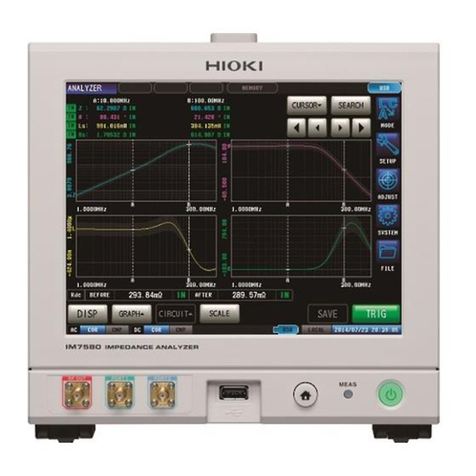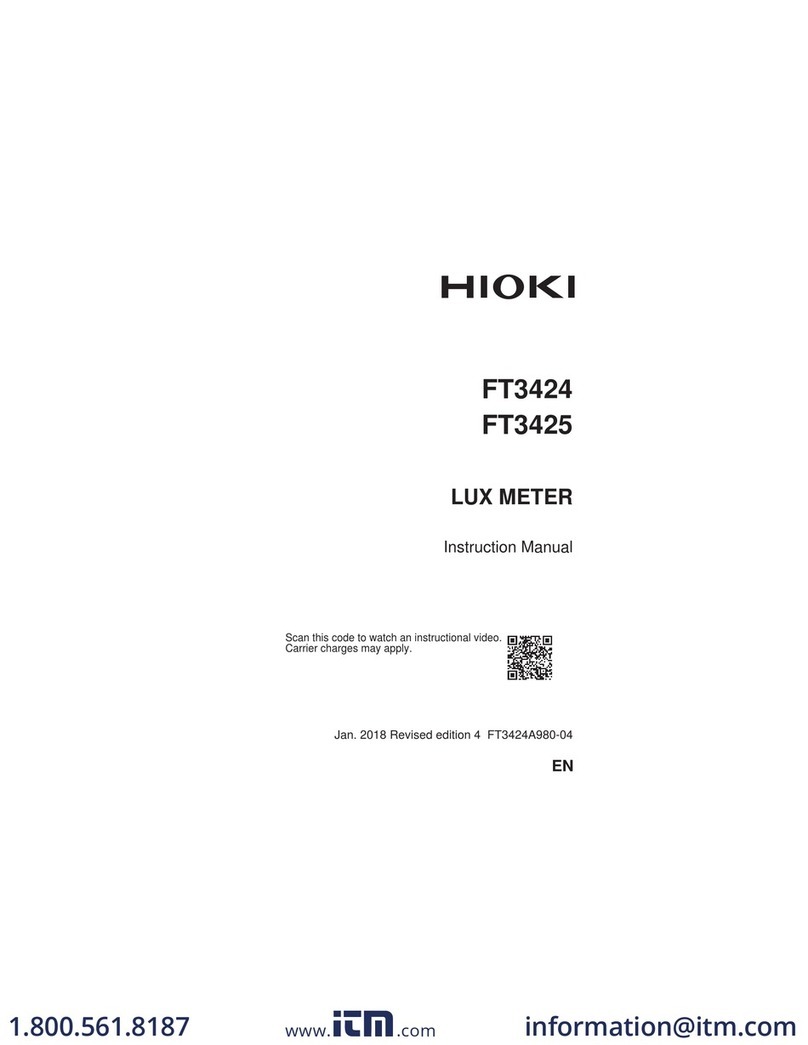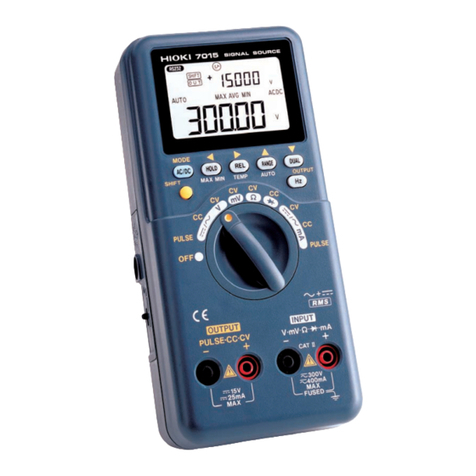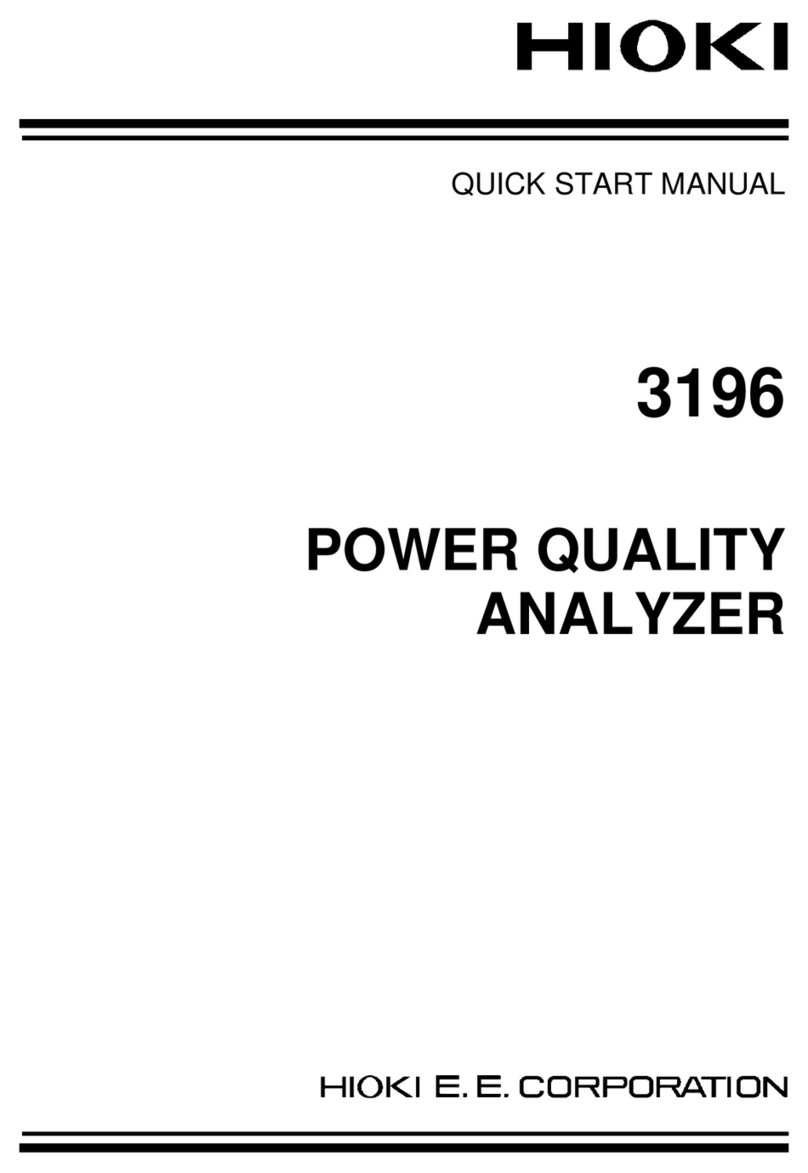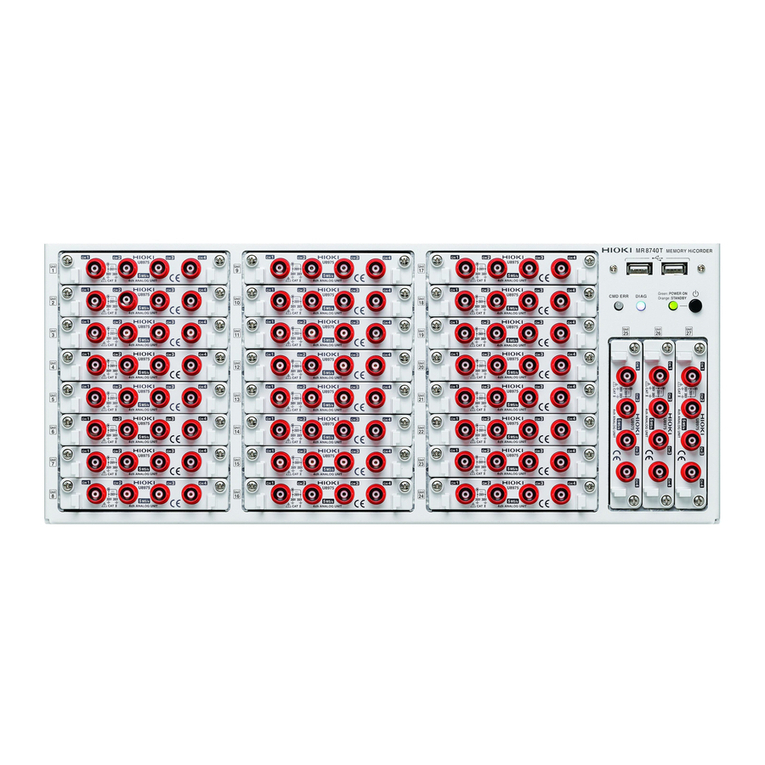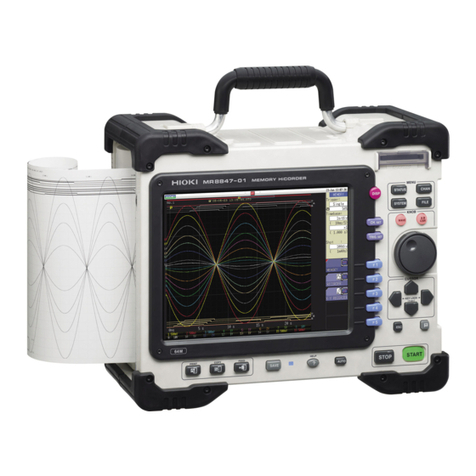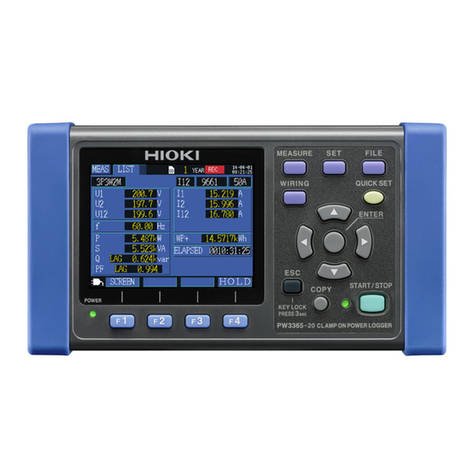
i
────────────────────────────────────────────────────
Introduction
────────────────────────────────────────────────────
NOTE
Introduction
Thank you for purchasing this HIOKI 9605 HARMONIC/FLICKER
MEASUREMENTS UNIT. To get the maximum performance from the unit,
please read this manual first, and keep this at hand.
・The HIOKI 3193, 3193-10 POWER HiTESTER will be referred to as the
HIOKI 3193in this manual.
・This unit is designed for installation in the HIOKI 3193, 3193-10 POWER
HiTESTER to enable harmonic analysis and flicker measurement. For details
on operation of the HIOKI 3193, please refer to its instruction manual.
・Harmonic analysis and flicker measurement cannot both be performed at the
same time.
・The 9605 measures flicker in terms of voltage fluctuations. The specific
measurement parameters are as follows:
Voltage measurements d measurements (dc, dmax, d(t)500ms)
Flicker measurements (Pst, Plt)
・This unit is a factory-fitted option. When the HIOKI 3193 unit is powered
on, you can check the installation on the screen.
・For operating environment, maintenance, and disposal at end of life, the
same conditions apply as to the main 3193 unit.
・Because of differences in measurement principle, frequency response, and
accuracy, the values measured by the 9605 (effective voltage value, effective
current value, active power, and phase difference) may not agree with values
measured by 9600/9601/9602 units installed in the same 3193 unit.
・The 9605 does not save analysis data if there is a power failure. All data
values from before the power failure are treated as zero. However, time
averaging values, peak hold values, and similar data values are preserved
when there is a power failure.
・The D/A output is not possible for the analyzed data by the 9605.
・For Flicker measurement, cumulative integration is not possible.
・The HIOKI 3193-10 does not come with a floppy disk drive (FDD). Even if
there is no special mention in the instruction manual, the FDD will not be
supported when using the 9605 unit in the 3193-10.

